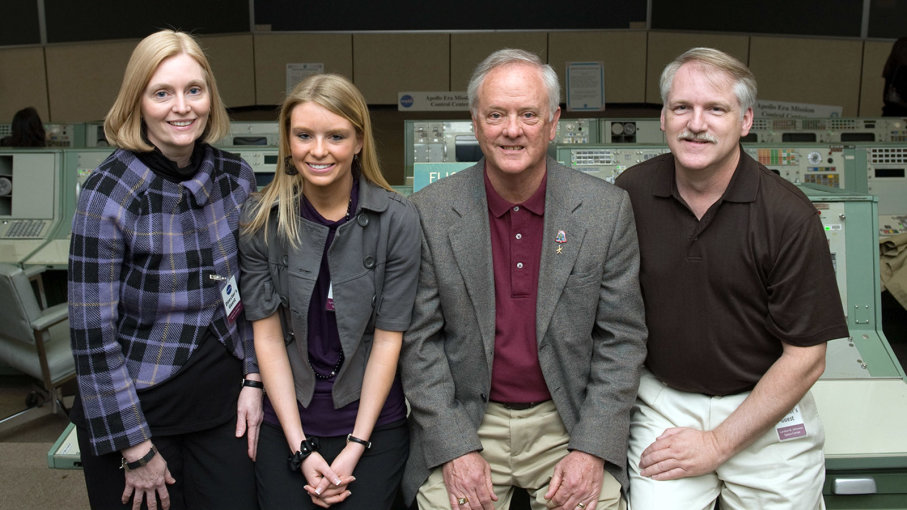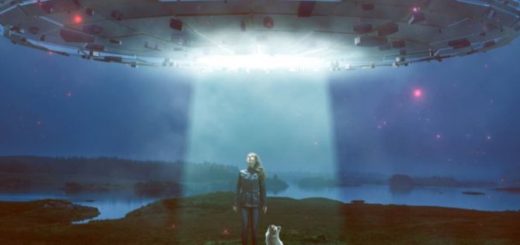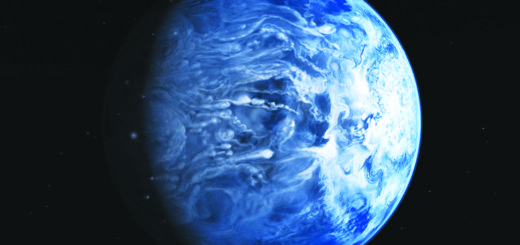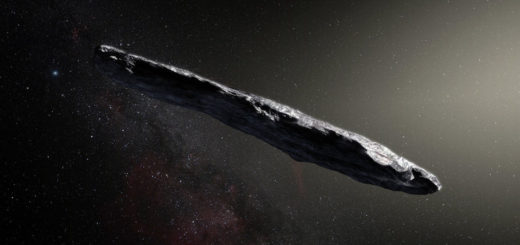One Family Has Sent Flowers to NASA for More Than 30 Years

When he was a boy growing up in Fort Worth, Texas, one of Mark Shelton’s more nagging childish concerns was that, someday, he’d grow too big to fit into a space capsule. That was the 1960s. NASA’s Mercury program had just made its first forays around Earth. The Apollo program was in its planning stages. The moon landing was still a dream and years away. It was a time, as President John F. Kennedy said in Houston in the early part of the decade, to take up “the most hazardous and dangerous and greatest adventure on which man has ever embarked.”
That was the beginning of young Mark Shelton’s infatuation with space travel and the American space program. And though he never made it into space — or he hasn’t yet, anyway — Shelton has become a part of NASA and the space program in his own, poignant way.
Out of Tragedy, Hope
America’s exploration of space has been marked by soaring triumphs — the 50th anniversary of landing on the moon is this summer — and crushing tragedies. The Space Shuttle program suffered its first disaster in 1986, when the orbiter Challenger exploded barely a minute after liftoff, killing all seven astronauts on board.
Shelton, like many others in America, watched in horror that day. He didn’t know what to do to show his support for a program that, until Challenger, had become almost an afterthought to much of the American public. “I wanted to find a way to let them know that every flight, people care,” Shelton recalls now. “Just because there isn’t media coverage didn’t mean that people didn’t care. We take it seriously that they take it seriously.”
More than two-and-a-half years later, after NASA scientists had worked countless hours to determine what went wrong with Challenger and countless more finding ways to make sure it didn’t happen again, the Space Shuttle program finally resumed. And Shelton decided on sending a simple gesture.
It was after STS-26 (the first “return to flight” mission after the Challenger disaster) wrapped up its mission in October 1988 and the shuttle Discovery was safely back on land, Shelton, his wife Terry and daughter MacKenzie sent a bunch of roses to NASA’s Mission Control at Johnson Space Center in Houston. In the bouquet: A red rose for each of the seven Discovery crew members on board, plus a single white one in remembrance of those who had been lost in the space program. The bouquet included a short note, but no phone number or address for the sender.
For every manned mission that NASA has flown since — even the first manned missions off U.S. soil since the Shuttle missions ended in 2011 — the family has continued the tradition. Over more than three decades, the Sheltons have sent more than 100 bouquets to Mission Control.
“They have never missed one time. They’ve always been supportive. Mark and I talk every once in a while. He’ll call me and I’ll call him. It’s a friendship that has lasted,” says retired NASA flight director Milt Heflin. “They are just so dedicated to doing this and to showing this support. That’s what makes this really, really remarkable to me.”
They even sent a bouquet to Mission Control for SpaceX’s test launch of its Crew Dragon capsule on March 2, 2019, which docked successfully at the International Space Station.
The Crew Dragon was unmanned, but carried a sensor-laden mannequin, dubbed Ripley after the space explorer in the “Alien” movies. It was the first time the family sent a bouquet for an unmanned mission and the first one they’ve sent since the Space Shuttle program ended in 2011. This bouquet also included a fake rose in honor of Ripley.
“This was like, ‘We’re back,'” Shelton says. “We have a capsule that is capable of supporting human life. A crew-rated capsule that can dock with the ISS.”
Anthony Vareha
@Enterprise_Flt
The Shelton family of Dallas was known for the tradition of sending flowers to @NASA_Johnson for Shuttle missions. We haven’t had a delivery since 2011 – until I got a call on console today. A reminder of what @Commercial_Crew means for this nation and the world. Go @spacex!
View image on Twitter
613
4:52 AM – Mar 3, 2019
Twitter Ads info and privacy
197 people are talking about this
A Connection to Space
It was NASA flight director Heflin, who spent 47 years with NASA and supervised 20 shuttle missions (seven of which he was lead flight director), who tracked down the Sheltons after receiving that first vase of roses in 1988. They talked, briefly, on the phone. (“I couldn’t believe it,” Shelton says now. “I was thinking, ‘You got way too much to do to be talking with me.'”)
A few years later, with Heflin at Mission Control helming another shuttle flight, another bouquet arrived, with a handwritten note from Terry. It read, in part:
NASA and her projects and missions have always been a source of hope, pride, and inspiration to the people of the United State and, more importantly, to the people all over the world. We all know the dedication of all of you associated with the space program to the successful completion of each mission and to the safety of those whose lives are in your hands.
We send flowers each time because we care that y’all care. … I am so grateful for the things that have come out of the space program which help our lives and those of our children. My daughter, MacKenzie, is most important in our lives, and we are grateful for what y’all do to improve the quality of her life.
Almost 50 years after a human first walked on the moon, Shelton, now 62, and Heflin, 75, still marvel at what the space program has accomplished — what it’s still accomplishing — and look forward to what’s next.
“Miniaturization, health and medical improvement and technological changes,” Shelton says. “We got this little phone in our hand, and it has so much power, and we can see a satellite image and a pretty close-up view of where we live, and the weather and what’s coming. And global communication. The studies of Earth. That’s really important.
“And we don’t know in the future: Are we ever going to need to leave the planet? Exploration is just such a basic need we have as individuals and as civilizations.”
Thanks to Shelton and those like him, Heflin says, the more than 17,000 scientists, engineers, astronauts, teachers and many other professionals that work for NASA feel the appreciation.
“People who work in Mission Control know better than somebody in the engineering directorate who’s doing a lot of that hard work ,” Heflin says. But I’m convinced, I still believe, that the public by and large really appreciates and likes what we do.”



 Creators of mankind
Creators of mankind Description of “Tall white aliens”
Description of “Tall white aliens” Where they came from?
Where they came from? About hostile civilizations
About hostile civilizations The war for the Earth
The war for the Earth “Tall white aliens” about eternal life
“Tall white aliens” about eternal life Video: “Nordic aliens”
Video: “Nordic aliens” Aliens
Aliens Alien encounters
Alien encounters The aliens base
The aliens base UFO
UFO Technology UFO
Technology UFO Underground civilization
Underground civilization Ancient alien artifacts
Ancient alien artifacts Military and UFO
Military and UFO Mysteries and hypotheses
Mysteries and hypotheses Scientific facts
Scientific facts


















